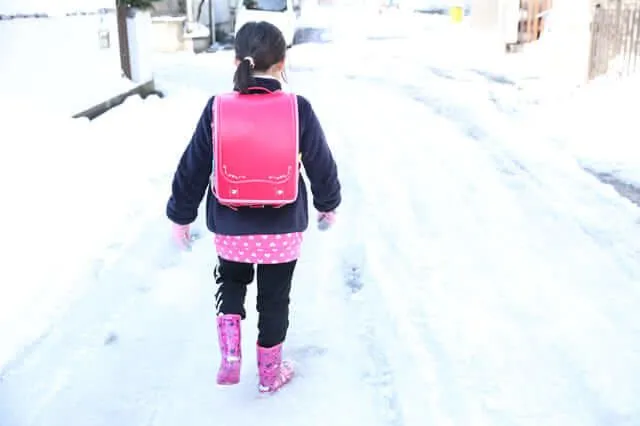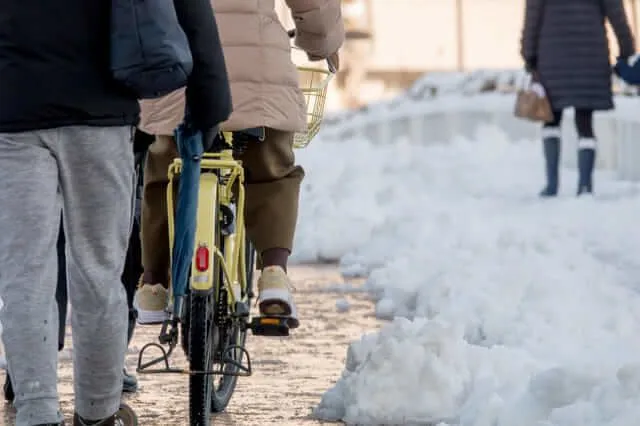Winter’s snowy landscapes offer romantic beauty, but also hidden dangers, especially icy roads. Unexpected falls on ice are not only painful but can lead to serious injuries. How can you move safely on ice, confidently walking through the winter cold without fear of slipping? This article shares effective ice walking tips to help you fully enjoy winter.
Take Small, Steady Steps: The Number One Tip to Avoid Slipping
The first and most important principle for maintaining balance on ice is to walk with small steps. Imagine when you take long strides, your body’s center of gravity fluctuates greatly, increasing the risk of losing balance on slippery surfaces. Conversely, short steps minimize body sway, keeping your center of gravity more stable.

In addition, when walking on narrow paths, we tend to narrow the distance between our feet. However, to increase stability, keep your feet about 8 inches (20cm) apart. This widens your contact area with the ice, creating better balance, especially when facing uneven or slightly sloped ice surfaces.
Place Your Entire Foot Down: Increase Contact, Reduce Slip Risk
The usual walking method of placing your heel down first, then your toes, can be counterproductive on ice. This style shifts your body weight from heel to toe, creating instability. To overcome this, focus on placing your entire foot flat on the ice at once.

Placing your entire foot down evenly distributes your body weight across the ice surface, increasing contact area and friction. Imagine trying to grip the ice with your whole foot, rather than just your heel or toes. Furthermore, when walking on ice, maintain an upright posture, perpendicular to the ground, and lean slightly forward. This helps you better control your balance and react more quickly if you happen to slip slightly.
Another technique that can be helpful on slippery ice patches is the “shuffle step”. Instead of lifting your feet high, lightly slide your feet across the ice, keeping the entire sole in continuous contact. However, remember to lift your feet slightly between steps to avoid tripping due to excessive friction between your shoes and the ice. This technique is especially effective when moving on flat, wide ice surfaces.
Walk Slowly and Focus: “Slow and Steady” on Ice
When walking on ice, speed is not a priority. Walk slowly and deliberately, taking time to feel the surface and identify slippery areas. Walking slowly not only helps you maintain better balance but also allows you enough time to react and adjust your steps when encountering unexpected icy patches.

Absolutely avoid using your phone while walking. Distraction can prevent you from noticing dangerous ice or reacting quickly to a slip. Devote your full attention to moving, carefully observing the path, and focusing on maintaining balance.
Additionally, be especially cautious when changing your walking speed. Situations like starting to walk from a standstill at a crosswalk, or accelerating to walk faster, can increase the risk of falling. Maintain a steady, slow pace and avoid sudden changes.
Watch Out for Snow Clinging to Shoe Soles: Stop the “Culprit” of Slips
In cold areas, many public places often have doormats at entrances to help people remove snow from their shoe soles. However, these amenities are not always available. Pay special attention to snow sticking to the soles of your shoes.

Tile floors, especially glossy ceramic tiles, become extremely slippery when wet with snow and water from your shoes. This is a common cause of unfortunate falls right after you enter a house, store, or train station. Take a moment to completely remove snow from your shoe soles before entering any indoor space. Pay particular attention to the heel and grooves of your soles, where snow tends to accumulate the most.
Recognize Slippery Areas: “Know Yourself and Your Enemy, and You Will Never Be Defeated”
Safe ice walking requires not only walking skills but also the ability to recognize and avoid areas with a high risk of slipping. Carefully observe your surroundings and pay attention to warning signs.

For example, white lane markings on pedestrian crosswalks tend to freeze faster and become more slippery than regular sidewalk surfaces. This is because the material used for lane markings may be different and have poorer heat absorption. It’s best to avoid walking on white lines and choose to move on parts of the road with rougher surfaces.
Also, be careful of shaded areas where ice may melt slower and persist longer. Metal surfaces like manhole covers and metal grates are also often very slippery when frozen. Always stay alert and carefully observe your path to make the safest movement decisions.
Conclusion: Safe on Ice, Enjoy Winter to the Fullest
Walking on ice requires caution and certain skills. By applying the ice walking tips shared, from taking small, steady steps, placing your entire foot down, walking slowly and focusing, watching out for snow on shoe soles, to recognizing slippery areas, you can confidently move safely in the winter cold. Equip yourself with the necessary knowledge and skills to fully enjoy the beauty and exciting experiences that winter brings, without worrying about the risk of slipping and falling.